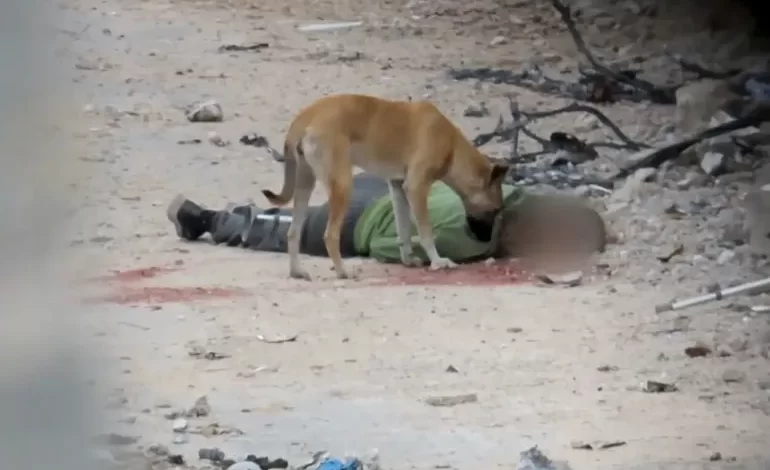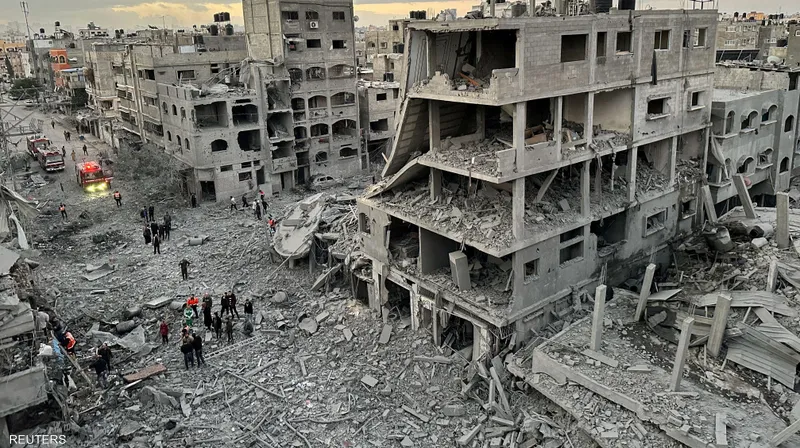
Israeli soldiers and officers have exposed shocking practices by the Israeli army in Gaza, where Israeli soldiers have created a line of corpses in northern Gaza. According to a Haaretz investigation, soldiers shoot to kill anyone crossing invisible “red lines,” even unarmed civilians or children. These actions are part of what some soldiers call a “kill zone,” where every death is counted as eliminating a “terrorist.”
A “Line of Corpses” and Dog Packs
Commanders from Division 252 described an unmarked “line of corpses” in northern Gaza near Netzarim Road. Bodies are often left uncollected, attracting packs of stray dogs. “In Gaza, people know to avoid areas where they see packs of dogs,” one officer explained. The Israeli army officially denies the existence of such zones, yet commanders in the field enforce this deadly boundary.
A soldier recalled, “Anyone crossing this line is shot. The bodies stay where they fall. It’s become a grim reality.” Civilians, including children, have reportedly been killed in this manner.
Civilians Counted as “Terrorists”
Another soldier shared disturbing accounts of how unarmed civilians are often labeled as terrorists after being killed. “We kill civilians, but the reports always count them as terrorists,” the soldier admitted. This misrepresentation feeds a culture of competition among Israeli military units, where killing the most “terrorists” is rewarded. “If one division killed 150, another tries to hit 200,” he said.
One soldier recounted a chilling incident involving a 16-year-old boy who was identified as a ‘threat’. “We riddled him with bullets, took pictures, and later learned he wasn’t a terrorist—just a kid,” the soldier said. The unit commander, however, congratulated the soldiers, dismissing objections. “To them, anyone who crosses the line is a terrorist,” the soldier added.
In another case, four unarmed Palestinians were spotted near a tank. Soldiers opened fire, killing three. The fourth man, who surrendered, was stripped, humiliated, and briefly interrogated before being released. “He was just trying to visit relatives in northern Gaza,” a soldier explained.
Orders to Shoot Despite White Flags
Several testimonies mentioned incidents where Palestinians waved white flags, signaling surrender or non-combatant status. “We saw two figures waving a white flag near Nahal Gaza,” one soldier recalled. Despite protests from a commander who argued they might be Israeli prisoners, a superior ordered “fire to kill.” Ultimately, the individuals retreated, avoiding death.
“No Laws in Gaza”
Soldiers describe Gaza as a place where normal rules do not apply. “We’ve spent over a year in a lawless environment where human life means nothing,” said a senior commander. Soldiers admitted to acting like an “armed militia” without oversight or accountability. One officer commented on the power given to field commanders, who now authorize strikes that previously required top-level approval.
Many soldiers expressed internal conflicts over their actions. “This war isn’t just killing Palestinians—it’s destroying us too,” said one reservist. Soldiers who voiced objections were often silenced or ridiculed. “If I’m called back to Gaza, I don’t think I’ll go,” he admitted according to Quds News Network.











